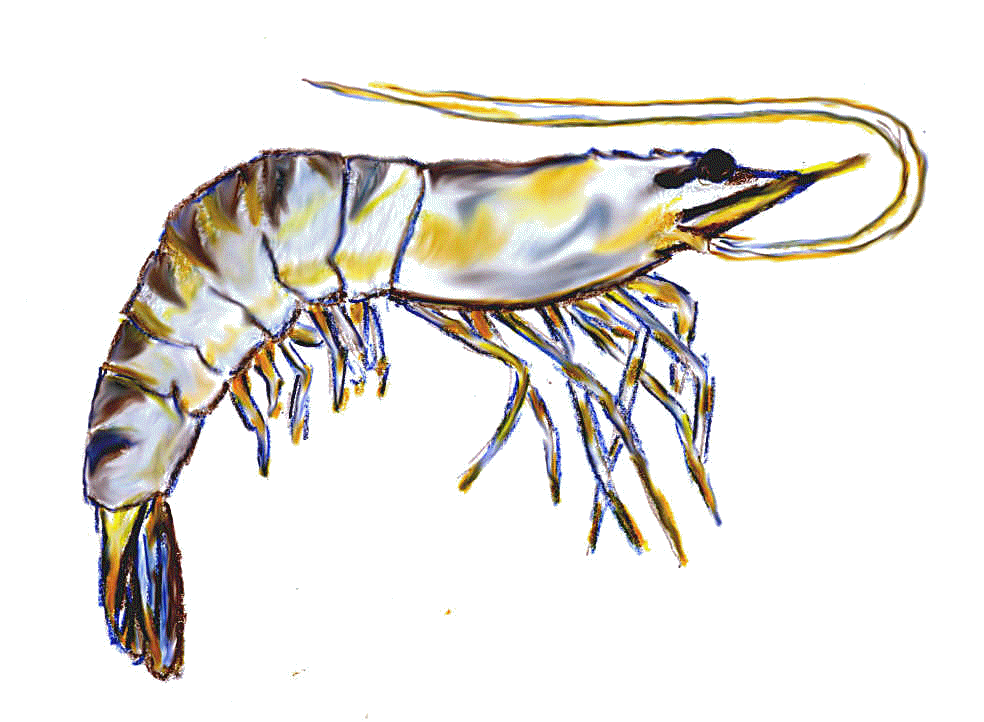|
|
|
||||||
|
Not to be confused with the green and brown tigers which are also marked with dark stripes the Black Tiger Shrimp are characterized by gray to black stripes on their thick shells which sometimes have a bluish hue. Black Tigers grow quickly and are a commercially important aquaculture crop in Asia. Farmed in Thailand, Bangladesh, India, southern China, and Indonesia they are now available year round.
The Black Tiger tends to have less flavor than shrimp harvested from the ocean and tend to have a softer texture. Farmed Black Tigers also tend to have greater shrinkage when cooked than their wild counterparts. They have however earned their nick name Giant Tiger Prawns because they can grow to 13 inches in length.
Yellowing or a bleached appearance can indicate excessive use of bisulfite: pitted or gritty shells is a result of undissolved sodium bisulfite acting on the shell. Pink discoloration in raw shrimp means the shrimp have been poorly handled. Melanosis, or black spot is the natural deterioration of the shell and meat. The shell darkens first, often forming rings, followed by the meat. Not considered a true health hazard it does however indicate poor handling. Fresh shrimp should have the aroma of fresh seawater or seaweed.
|
|||||||
|
|
|||||||


